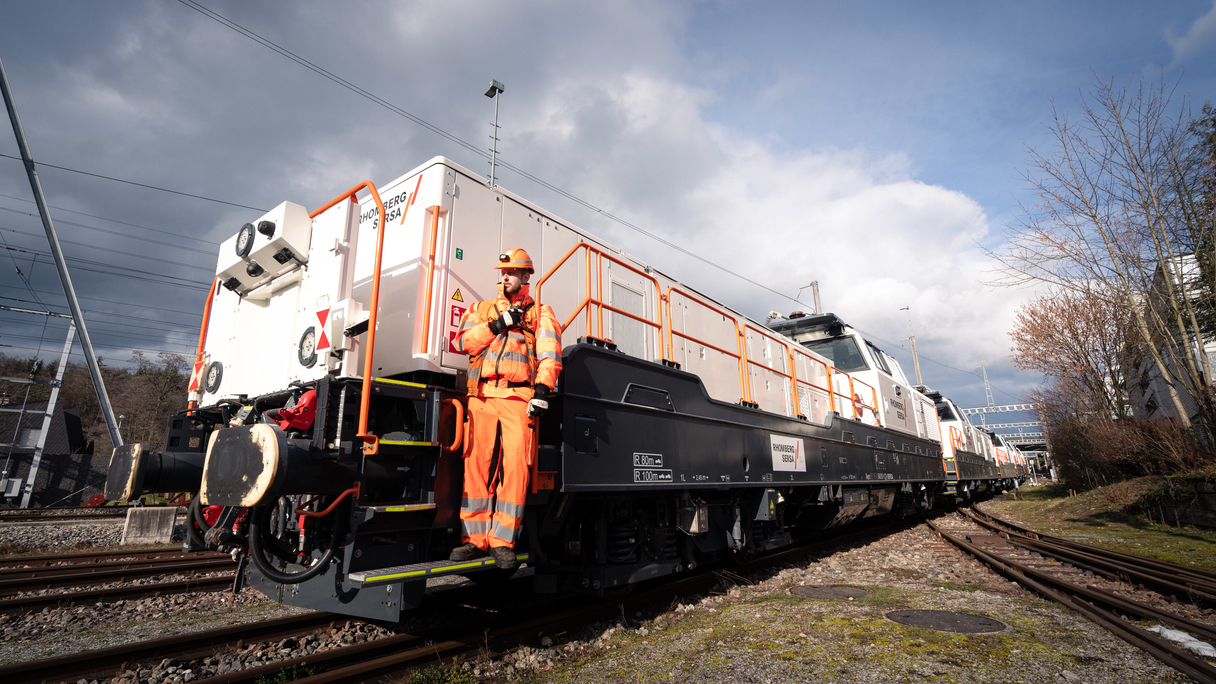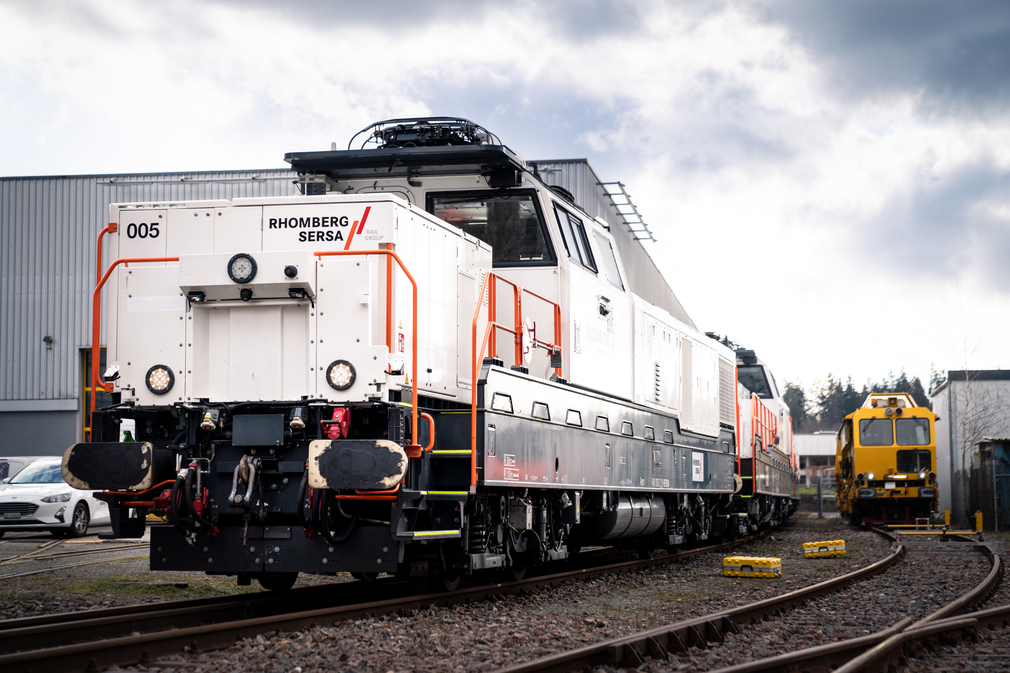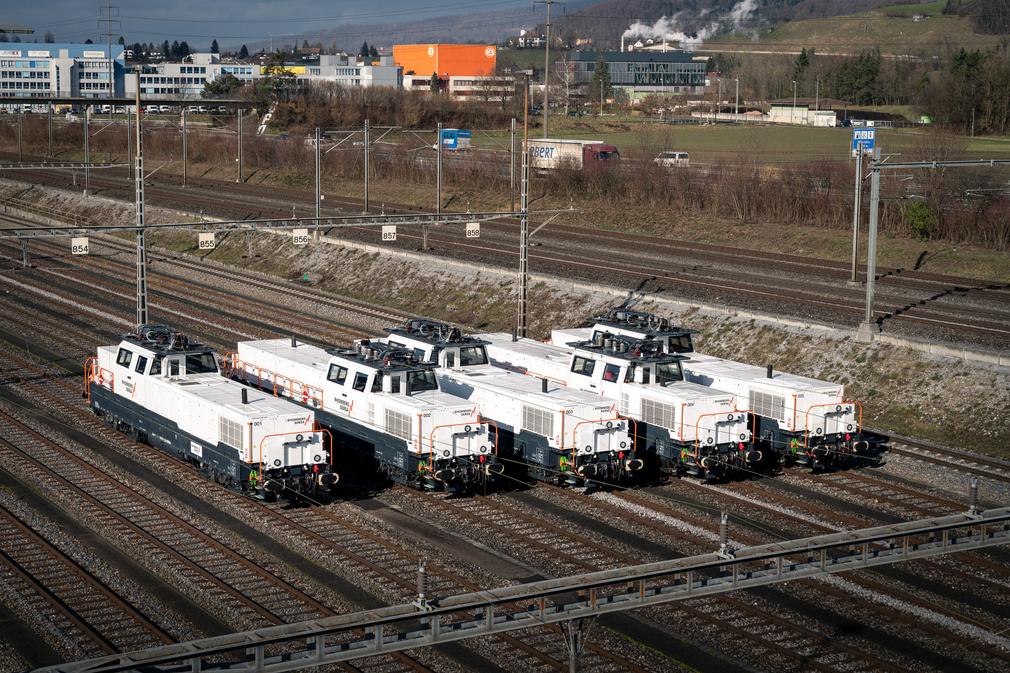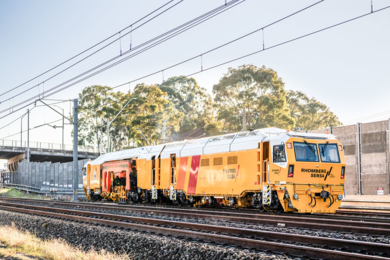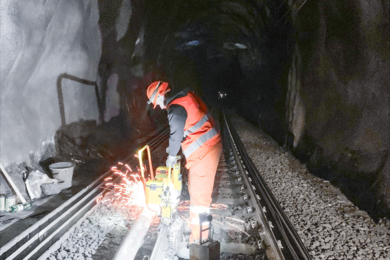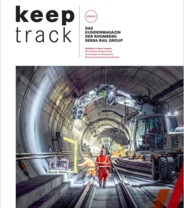Since December 2022, the latest H4 locomotives have been in operation for RSRG. The last of the five "new" ones was commissioned in April 2023. Since then, they have already supported numerous RSRG construction sites. Time for an initial conclusion.
Serkan Kahraman, Operations Dispatcher for Construction Sites and Locomotives, answers our questions about the H4 locomotives and the experiences made so far. He coordinated his answers with Eduard Vetterli, who, in his role as Head of Rail Vehicle & Logistics Maintenance, also oversaw the procurement and technically supervises the vehicle.
Participants: Serkan Kahraman Operations Dispatcher for Construction Sites and Locomotives Eduard Vetterli Head of Rail Vehicle & Logistics Maintenance Lisa Klei Assistant Communication
How is it working with the H4 locomotives?
We are very satisfied. In particular, their use during the renovation of the E-group in the marshalling yard in Basel was a good test for the H4. Here, they had to prove they could operate continuously, sometimes for 48 hours straight over weekends, and provide good service to the drivers. Initially, there were a few teething problems, but also some operator errors. However, we were able to rectify these issues quickly in collaboration with the drivers and Alstom. At the current time, we cannot precisely comment on the reliability of the machines as we still lack long-term experience. However, we are on the right path, as the past few months have shown that the teething issues are becoming less frequent.
In which area are the H4 locomotives used?
Since we acquired the first machines, we have used them for transfer runs for our Mechanical Track Construction and on construction sites. They are also used for our customers such as Furrer and Frey, Elbatech, Eberhard etc.
Are the H4 locomotives used in both freight traffic and construction site logistics?
We must clearly state that the locomotive is not intended for traditional freight traffic. It is used for the transfer of track construction machines, construction site traffic, and daily construction site logistics, but also on the construction sites themselves. Our focus is currently more on its use on construction sites to cover many internal construction sites.
In which area does the H4 locomotive simplify work? What advantages does it offer?
There is no electricity on the destination tracks, so a second locomotive or even a rented shunting service at the destination station would normally be required. This intermediate step is eliminated thanks to the H4's bimodal drive system. In short: the main advantage is that we can drive to the desired destination track without being dependent on a second locomotive or another team.
You mentioned bimodal operation. What does this mean?
Usually, a locomotive is powered by either diesel or electricity. With bimodal equipment, the locomotive can be operated with two different energy sources, namely diesel or electricity. This is usually achieved with a combination of diesel and electric drives. In electric mode, the locomotive is powered from the overhead line, which is more efficient and environmentally friendly than diesel operation. We can fall back on this, for example, when there is no electrification or when the power is turned off. Bimodal operation contributes to increasing the flexibility of locomotives and achieving higher energy efficiency.
How does switching from electric drive to diesel engine work?
Switching from diesel to electric mode and vice versa takes just a few seconds. Due to the system, switching in both directions works at a speed of less than 40 km/h.
In what ratio are electric operation and operation with the diesel engine used?
It's difficult to answer at the current time. This also depends on the areas of application. Currently, the operation under the catenary is 40%, and in diesel mode, it's 60%. This value is determined by the proportion of construction site operations.
From which source is the power for the H4's drive obtained?
SBB operates several of its own railway power plants that generate the electricity needed for train operations. Most railway power plants use water or nuclear energy as a source of power. For example, a significant proportion of railway electricity is produced by the Leibstadt nuclear power plant. Another part of the railway electricity is generated by hydroelectric power plants in the Swiss Alps. SBB trains already run on 90% hydroelectric power. The remaining 10% comes from conventional sources. By 2025, all railway electricity is to come from renewable sources.
Where are the H4 locomotives currently in use?
The H4 locomotives have been specifically developed for SBB infrastructure operations in Switzerland. They comply with regulations and regulations in Switzerland, especially with regard to train safety systems and overhead line voltage. Unfortunately, they cannot be used abroad or for cross-border traffic because the approval is limited to Switzerland. It is a "non-interoperable locomotive" that is not TSI-compliant.
With professional maintenance in our own workshops, an emission-reduced and efficient use is to be ensured. Is that working? How maintenance-intensive are the H4 locomotives?
The locomotive, with its electric drive train, is less maintenance-intensive compared to a diesel-hydraulic locomotive. The diesel engine determines the maintenance intervals. If the locomotive is operated electrically for two-thirds of the time, the interval for preventive maintenance is four to six months, depending on shift operations.
How does RSRG measure CO2 reduction? How much do the H4s contribute to the overall reduction?
Of course, the electric drive makes a significant contribution to CO2 reduction and is more environmentally friendly than a conventional diesel drive. We can derive the diesel equivalent compared to electrical energy. The electrical energy is measured on the locomotive. If you multiply this electric energy consumption by three, it results in the amount of diesel needed to deliver the same energy to the track. With an operational use of 50% diesel operation and 50% catenary, the CO2 emissions of the RSRG's H4 fleet will be reduced by 420 tons per year with 220 shifts per locomotive. What we will actually save can only be statistically proven and meaningfully stated in a year.
Who is currently operating the five locomotives?
The locomotives are operated by our specially trained and certified locomotive drivers. During the transports, there is always one locomotive driver and one accompanying person present. Ten people have already been trained, and more are to follow.
Factbox Alstom Prima H4
- Developed and produced in Belfort, France
- Since April 2023, 5 H4 locomotives have been in use for RSRG
- Gauge: Standard gauge
- Top speed: 120 km/h
- Fuel tank capacity: 2000 liters of diesel
- Electrical system: 15 kV, 16.7 Hz
- Features:
Bimodal drive system (electric motor and diesel engine)
Multiple traction of up to four locomotives in a group possible
Low maintenance
Source: Alstom Prima H4 – Wikipedia
